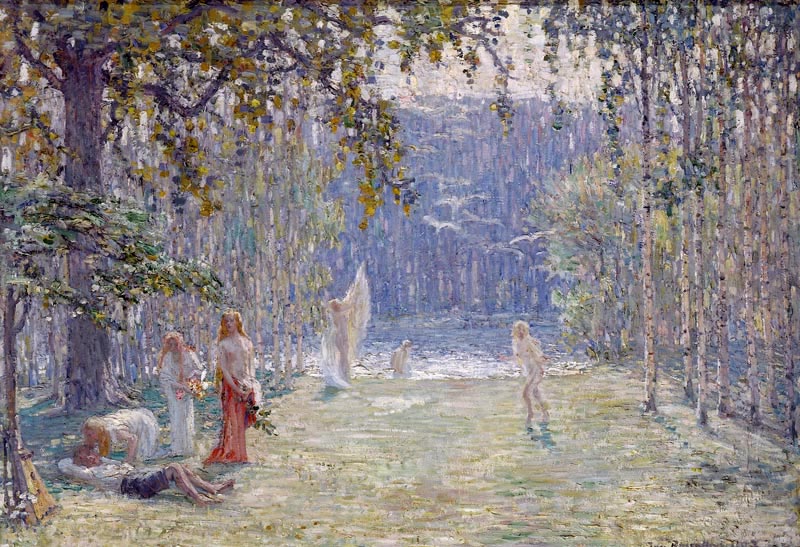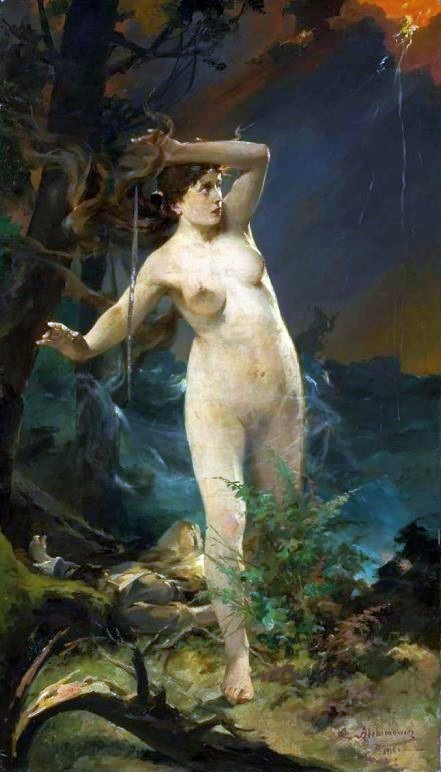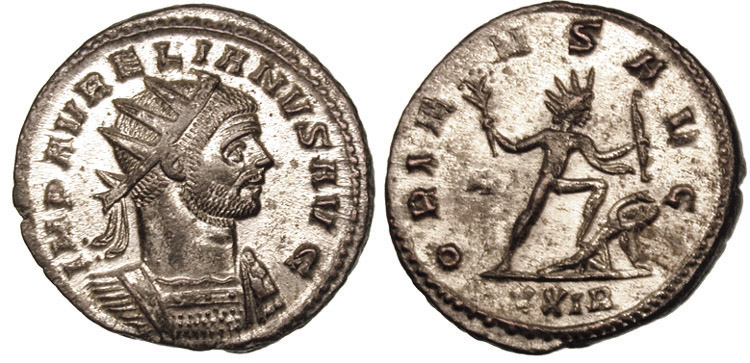|
Saulė
Saulė ( lt, Saulė, lv, Saule) is a solar goddess, the common Baltic solar deity in the Lithuanian and Latvian mythologies. The noun ''Saulė''/''Saule'' in the Lithuanian and Latvian languages is also the conventional name for the Sun and originates from the Proto-Baltic name *''Sauliā'' > *''Saulē''. Representation Saulė is one of the most powerful deities, the goddess of the sun itself, responsible for all life on Earth. She is the patroness of the unfortunate, especially orphans. The Lithuanian and Latvian words for "the world" (''pasaulis'' and ''pasaule'') are translated as " placeunder the Sun". Saulė is mentioned in one of the earliest written sources on Lithuanian mythology. According to the Slavic translation of the Chronicle by John Malalas (1261), a smith named Teliavelis made the Sun and threw it into the sky. Missionary Jerome of Prague (ca. 1369–1440) spent three years attempting to Christianize Lithuania and later recounted a myth about the kidnapped S ... [...More Info...] [...Related Items...] OR: [Wikipedia] [Google] [Baidu] |
Aušrinė
Aušrinė ("dawning", not to be confused with ''Aušra'', "dawn") is a feminine deity of the morning star (Venus) in the Lithuanian mythology. She is the antipode to "Vakarinė", the evening star. Her cult possibly stems from that of the Indo-European dawn goddess Hausōs and is related to the Latvian Auseklis, Greek Eos, Roman Aurora and Vedic Ushas. Aušrinė is the goddess of beauty, love and youth, linked with health, re-birth and new beginnings. After the Christianization of Lithuania, the cult merged with Christian images and the symbolism of the Virgin Mary. Historical attestation Aušrinė was first mentioned by 16th-century Polish historian Jan Łasicki as ''Ausca''. He described a "goddess of the rays of the sun that descend and rise above the horizon". Folkloric role According to folklore, each morning Aušrinė and her servant Tarnaitis (possibly Mercury) prepare the way for Saulė (the Sun). In the evening, Vakarinė prepares the bed for Saulė. The relations ... [...More Info...] [...Related Items...] OR: [Wikipedia] [Google] [Baidu] |
Lithuanian Mythology
Lithuanian mythology ( lt, Lietuvių mitologija) is the mythology of Lithuanian polytheism, the religion of pre-Christian Lithuanians. Like other Indo-Europeans, ancient Lithuanians maintained a polytheistic mythology and religious structure. In pre-Christian Lithuania, mythology was a part of polytheistic religion; after Christianisation mythology survived mostly in folklore, customs and festive rituals. Lithuanian mythology is very close to the mythology of other Baltic nations – Prussians, Latvians, and is considered a part of Baltic mythology. Sources and evidence Early Lithuanian religion and customs were based on oral tradition. Therefore, the very first records about Lithuanian mythology and beliefs were made by travellers, Christian missionaries, chronicle writers and historians. Original Lithuanian oral tradition partially survived in national ritual and festive songs and legends which started to be written down in the 18th century. The first bits about Baltic ... [...More Info...] [...Related Items...] OR: [Wikipedia] [Google] [Baidu] |
Teliavelis
The list of Lithuanian gods is reconstructed based on scarce written sources and late folklore. Lithuania converted to Christianity in 1387, but elements of Lithuanian mythology survived into the 19th century. The earliest written sources, authored by foreigners and Christians, only briefly mention the Lithuanian gods. Beginning in the 16th century, the pagan religion received more attention from authors, but often their accounts were confused, contradictory, and heavily influenced by various religious agendas. Collection and recording of folklore began in the 19th century, by which time the pagan mythology had become fragmented and mixed with Christian traditions. The cults of old deities transformed into folklore (individual tales, myths, songs, etc.) without associated rituals. Because of such difficulties obtaining data, there is no accepted list of Lithuanian gods. Different authors present wildly contradictory reconstructions of the Lithuanian pantheon. Names from folklore m ... [...More Info...] [...Related Items...] OR: [Wikipedia] [Google] [Baidu] |
Solar Deity
A solar deity or sun deity is a deity who represents the Sun, or an aspect of it. Such deities are usually associated with power and strength. Solar deities and Sun worship can be found throughout most of recorded history in various forms. The Sun is sometimes referred to by its Latin name ''Sol'' or by its Greek name '' Helios''. The English word ''sun'' derives from Proto-Germanic *''sunnǭ''. Overview Predynasty Egyptian beliefs attribute Atum as the Sun god and Horus as god of the sky and Sun. As the Old Kingdom theocracy gained influence, early beliefs were incorporated into the expanding popularity of Ra and the Osiris-Horus mythology. Atum became Ra-Atum, the rays of the setting Sun. Osiris became the divine heir to Atum's power on Earth and passed his divine authority to his son, Horus. Other early Egyptian myths imply that the Sun is incorporated with the lioness Sekhmet at night and is reflected in her eyes; or that the Sun is found within the cow Hathor during t ... [...More Info...] [...Related Items...] OR: [Wikipedia] [Google] [Baidu] |
Solar Goddess
A solar deity or sun deity is a deity who represents the Sun, or an aspect of it. Such deities are usually associated with power and strength. Solar deities and Sun worship can be found throughout most of recorded history in various forms. The Sun is sometimes referred to by its Latin name ''Sol'' or by its Greek name ''Helios''. The English word ''sun'' derives from Proto-Germanic *''sunnǭ''. Overview Predynasty Egyptian beliefs attribute Atum as the Sun god and Horus as god of the sky and Sun. As the Old Kingdom theocracy gained influence, early beliefs were incorporated into the expanding popularity of Ra and the Osiris-Horus mythology. Atum became Ra-Atum, the rays of the setting Sun. Osiris became the divine heir to Atum's power on Earth and passed his divine authority to his son, Horus. Other early Egyptian myths imply that the Sun is incorporated with the lioness Sekhmet at night and is reflected in her eyes; or that the Sun is found within the cow Hathor during th ... [...More Info...] [...Related Items...] OR: [Wikipedia] [Google] [Baidu] |
Mēness
Latvian mythology is the collection of myths that have emerged throughout the history of Latvia, sometimes being elaborated upon by successive generations, and at other times being rejected and replaced by other explanatory narratives. These myths stem from folk traditions of the Latvian people and pre-Christian Baltic mythology. Latvian mythology is used particularly as a tool for reconstructing and analysing the historical pagan beliefs and national identity of Latvia. It is important to note that the minute details of most, if not all of these myths vary per region and sometimes even family. History 13th–18th century There are few reports of Baltic tribes, the ancestors of modern Latvians, and their mythology until Christianization in the 13th century. Since Christianization, there have been several reports related to local mythology including chronicles, travel reports, visitation records, Jesuit reports and other accounts of pagan practices. These reports are consider ... [...More Info...] [...Related Items...] OR: [Wikipedia] [Google] [Baidu] |
Sol (Roman Mythology)
Sol is the personification of the Sun and a god in ancient Roman religion. It was long thought that Rome actually had two different, consecutive sun gods: The first, Sol Indiges ( la, the deified sun), was thought to have been unimportant, disappearing altogether at an early period. Only in the late Roman Empire, scholars argued, did the solar cult re-appear with the arrival in Rome of the Syrian Sol Invictus ( la, the unconquered sun), perhaps under the influence of the Mithraic mysteries. Publications dating back to the mid 90s have challenged the notion of two different sun gods in Rome, pointing to the abundant evidence for the continuity of the cult of Sol, and the lack of any clear differentiation – either in name or depiction – between the "early" and "late" Roman sun god. Etymology The Latin ''sol'' for "Sun" is believed to originate in the Proto-Indo-European language, as a continuation of the heteroclitic ''*Seh2ul- / *Sh2-en-'', and thus cognate to other solar d ... [...More Info...] [...Related Items...] OR: [Wikipedia] [Google] [Baidu] |
Baltic Mythology
Baltic mythology is the body of mythology of the Baltic people stemming from Baltic paganism and continuing after Christianization and into Baltic folklore. Baltic mythology ultimately stems from Proto-Indo-European mythology. The Baltic region was one of the last regions of Europe to be Christianized, a process that began in the 15th century and continued for at least a century afterward. While no native texts survive detailing the mythology of the Baltic peoples during the pagan period, knowledge of such beliefs may be gained from Russian and German chronicles, from later folklore, from etymology and from the reconstructions of comparative mythology.Puhvel (1989:222-229). While the early chronicles (14th and 15th century) were largely the product of missionaries who sought to eradicate the native paganism of the Baltic peoples, rich material survives into Baltic folklore. This material has been of particular value in Indo-European studies as, like the Baltic languages, it is co ... [...More Info...] [...Related Items...] OR: [Wikipedia] [Google] [Baidu] |
Latvian Mythology
Latvian mythology is the collection of myths that have emerged throughout the history of Latvia, sometimes being elaborated upon by successive generations, and at other times being rejected and replaced by other explanatory narratives. These myths stem from folk traditions of the Latvian people and pre-Christian Baltic mythology. Latvian mythology is used particularly as a tool for reconstructing and analysing the historical pagan beliefs and national identity of Latvia. It is important to note that the minute details of most, if not all of these myths vary per region and sometimes even family. History 13th–18th century There are few reports of Baltic tribes, the ancestors of modern Latvians, and their mythology until Christianization in the 13th century. Since Christianization, there have been several reports related to local mythology including chronicles, travel reports, visitation records, Jesuit reports and other accounts of pagan practices. These reports are considered ... [...More Info...] [...Related Items...] OR: [Wikipedia] [Google] [Baidu] |
Dievas
Lithuanian Dievas, Latvian Dievs, Latgalian Dīvs, Old Prussian Dìews, Yotvingian Deivas was the primordial supreme god in the Baltic mythology and one of the most important deities together with Perkūnas and he was brother of Potrimpo. He was the god of sky, prosperity, wealth, ruler of gods, and creator of universe. Dievas is a direct successor of the Proto-Indo-European supreme sky father god *Dyēus of the root ''*deiwo-''. Its Proto-Baltic form was *''Deivas''. Dievas had two sons Dievo sūneliai (Lithuanian) or Dieva dēli (Latvian) known as the Heavenly Twins. In recent Lithuanian and Latvian, this word may refer to the deity of any kind (Pagan, Christian, fictional and the like). In English, Dievas may be used as a word to describe the God (or, the supreme god) in the pre-Christian religion of Balts, where Dievas was understood to be the supreme being of the world. In Lithuanian and Latvian, it is also used to describe God as it is understood by major world re ... [...More Info...] [...Related Items...] OR: [Wikipedia] [Google] [Baidu] |
Perkūnas
Perkūnas ( lt, Perkūnas, lv, Pērkons, Old Prussian: ''Perkūns'', ''Perkunos'', Yotvingian: ''Parkuns'', Latgalian: ''Pārkiuņs'') was the common Baltic god of thunder, and the second most important deity in the Baltic pantheon after Dievas. In both Lithuanian and Latvian mythology, he is documented as the god of sky, thunder, lightning, storms, rain, fire, war, law, order, fertility, mountains, and oak trees. Etymology The name continues PIE ''*'', cognate to ''*'', a word for "oak", " fir" or "wooded mountain". The Proto-Baltic name *''Perkūnas'' can be reconstructed with certainty. Slavic Perun is a related god, but not an etymologically precise match. Finnish Perkele, a name of Ukko, is considered a loan from Baltic. Another connection is that of ''terpikeraunos'', an epithet of Zeus meaning "''who enjoys lightning''". Perkūnas in written sources Most information about Perkūnas comes from folklore songs, legends, and fairy tales. Because most of them were c ... [...More Info...] [...Related Items...] OR: [Wikipedia] [Google] [Baidu] |
Mercury (planet)
Mercury is the smallest planet in the Solar System and the closest to the Sun. Its orbit around the Sun takes 87.97 Earth days, the shortest of all the Sun's planets. It is named after the Roman god ' ( Mercury), god of commerce, messenger of the gods, and mediator between gods and mortals, corresponding to the Greek god Hermes (). Like Venus, Mercury orbits the Sun within Earth's orbit as an inferior planet, and its apparent distance from the Sun as viewed from Earth never exceeds 28°. This proximity to the Sun means the planet can only be seen near the western horizon after sunset or the eastern horizon before sunrise, usually in twilight. At this time, it may appear as a bright star-like object, but is more difficult to observe than Venus. From Earth, the planet telescopically displays the complete range of phases, similar to Venus and the Moon, which recurs over its synodic period of approximately 116 days. The synodic proximity of Mercury to Earth makes Mercury most ... [...More Info...] [...Related Items...] OR: [Wikipedia] [Google] [Baidu] |






_-_1909.jpg)